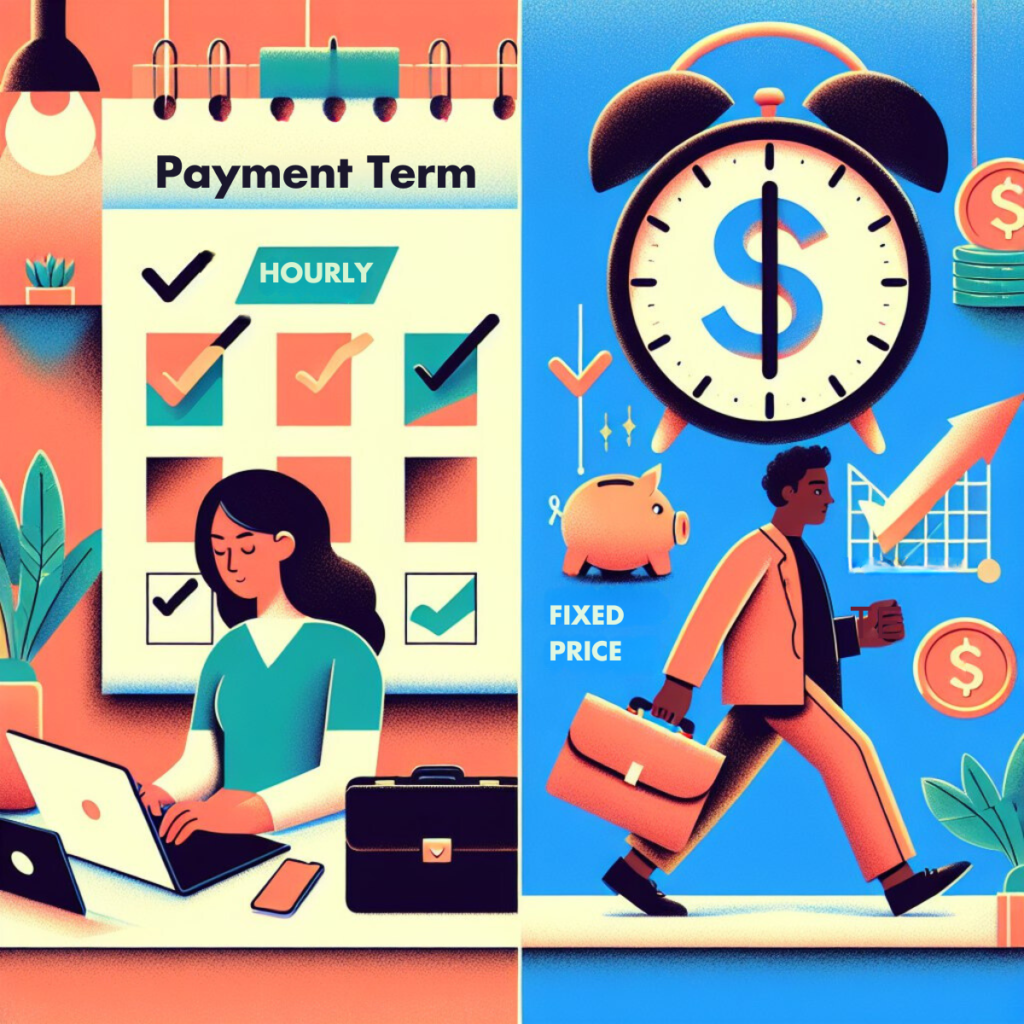Upwork Hourly vs. Fixed-Price Projects: Navigating the Payment Maze as a Freelancer

The freelance life beckons: freedom, flexibility, and the chance to be your own boss. But venturing into the world of Upwork, a popular freelancing platform, can feel overwhelming. One of the first crucial decisions you’ll face is the payment model: hourly or fixed-price projects?
Fear not, fellow freelancer! This guide will demystify these payment structures, helping you choose the one that aligns perfectly with your skills, project scope, and career goals.
The Allure of Hourly Billing:
Imagine this: a steady stream of income reflecting the exact hours you pour into a project. With hourly billing, you track your time meticulously using Upwork’s tools and get paid based on the hours logged. It’s a fantastic option for projects with:
Unpredictable Scope: Content creation often falls into this category. You might be initially tasked with writing 5 blog posts, but the client requests additional revisions or asks for a few more articles. Hourly billing ensures you’re compensated fairly for the extra effort.
Ongoing Collaboration: Hourly billing is ideal for long-term projects where the client might need ongoing support or adjustments to the initial plan.
Benefits of Hourly Billing:
Flexibility: You control your workload and income based on the hours you work. Need a break? Simply adjust your schedule.
Transparency: Clients see exactly what they’re paying for, fostering trust and potentially leading to repeat business.
Protection from Scope Creep: If the client requests additional work beyond the initial agreement, you’re compensated for the extra time invested.
The Hourly Billing Catch-22:
While hourly billing offers advantages, it’s not without drawbacks:
Time Tracking: Logging your hours consistently can be tedious and requires discipline. Inconsistent time recording can lead to disputes with clients.
Client Perception: Some clients might be apprehensive about open-ended costs associated with hourly billing. It’s crucial to communicate your estimated project duration upfront.
Unpredictable Income: Your income can fluctuate based on the number of hours you work.
The Fixed-Price Promise:
Fixed-price projects offer a more predictable income stream. You and the client agree on a flat fee for the entire project, regardless of the time it takes to complete. This approach works well with projects with:
Clearly Defined Scope: Website design projects with well-defined deliverables are perfect for fixed pricing.
Shorter Timeframes: Fixed-price projects are ideal for short-term, well-defined tasks where unexpected changes are unlikely.
Benefits of Fixed-Price Billing:
Predictable Income: You know exactly how much you’ll earn for the project, making financial planning easier.
No Time Tracking Hassle: You don’t need to meticulously log your hours, freeing up your time for other tasks.
Client Preference: Many clients prefer the upfront cost certainty of fixed-price projects.
The Fixed-Price Pitfalls:
While fixed-price projects sound attractive, they come with challenges:
Scope Creep Risks: If the client requests changes beyond the initial agreement, you might end up working for free. Clearly define the project scope and outline potential change order fees in your proposal to mitigate this risk.
Underestimating Time: If you underestimate the project’s complexity, you could end up losing money. Thorough project planning and communication are vital to avoid this.
Lost Potential Earnings: If you complete the project in less than the estimated time, you won’t earn extra for your efficiency.
So, Which Model Reigns Supreme?
The answer is – it depends!
Consider these factors when making your decision:
Your Project Management Style: Are you comfortable with time tracking? Do you prefer the structure of clearly defined projects?
Project Scope: Is the scope well-defined, or is there potential for change?
Client Preference: Some clients might have a clear preference for one model over the other.
Pro Tip: Be Flexible!
While you might gravitate towards one model, consider offering both options to clients. This could give you a competitive edge and cater to clients with different needs.
Beyond the Billing Model:
Remember, the payment model is just one piece of the puzzle.
Here are some additional tips for a successful Upwork freelance journey:
Build a Strong Profile: Highlight your skills, experience, and portfolio to attract high-quality clients.
Craft Compelling Proposals: Tailor your proposals to each project, addressing the client’s specific needs and showcasing your value proposition.
Maintain Excellent Communication: Be responsive, professional and keep clients informed throughout the project.
Recommend0 recommendationsPublished in Freelancing



Responses